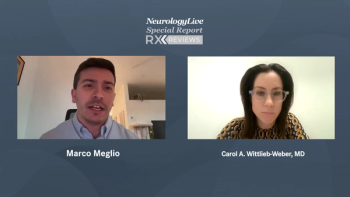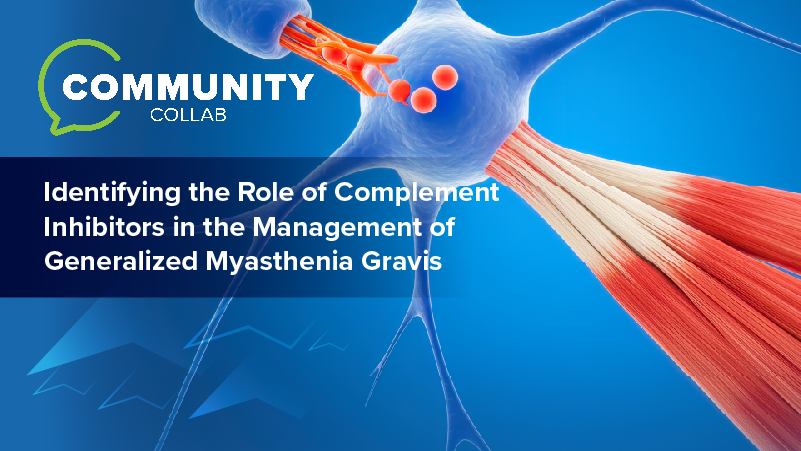
Cerebrospinal Fluid Lipids Shows Promise as Biomarkers for Differentiating NMOSD and MS
Key Takeaways
- Specific CSF lipids can differentiate MS from NMOSD, offering potential biomarkers for diagnosis and monitoring.
- Machine-learning identified three lipids with 91% sensitivity and specificity in distinguishing NMOSD from MS.
Cerebrospinal fluid lipid profiling revealed potential biomarkers for distinguishing NMOSD from MS and tracking disease activity, offering new insights into neuroinflammatory disease monitoring.
A recently published study in the Journal of Neurology, Neurosurgery and Psychiatry identified specific cerebrospinal fluid (CSF) lipids that distinguished multiple sclerosis (MS) from neuromyelitis optica spectrum disorder (NMOSD) and other neurological diseases with high accuracy, offering potential new biomarkers for diagnosis and disease monitoring. The research also reported correlations between CSF lipid levels and measures of disease activity, including Expanded Disability Status Scale (EDSS) scores and inflammatory cytokines.1
In the study, researchers screened 353 lipid species in pooled CSF samples, quantifying 161 lipids across patients diagnosed with MS and NMOSD by clinical criteria as well as other inflammatory neurological diseases (OIND), and non-inflammatory neurological diseases (NIND). Significant differences emerged in the results, particularly in NMOSD, where 29 lipids—including sphingolipids and polyunsaturated lysophosphatidylcholines (LPCs)—were significantly elevated compared with MS.
"My understanding, from speaking to neuroimmunology specialists, is that diagnosis of AQP4 antibody-positive NMOSD is relatively clear-cut. The benefit of an alternative diagnosis will be distinguishing NMOSD from MS for AQP4 antibody-negative NMOSD, which I believe is somewhere in the range of 20-40% of NMOSD cases," senior author Anthony Don, PhD, a professor of medical biochemistry at the University of Sydney School of Medical Sciences, told NeurologyLive® in a recent interview. "We achieved very good differentiation of NMOSD from MS based on levels of just 3 lipids, and these lipids are easy to quantify with mass spectrometry systems that are used in clinical diagnostic labs. So an assay based on CSF or serum lipids would be quite easy to adapt for clinical practice, and low cost."
Further analysis showed that NMOSD cases exhibited higher levels of specific lipid classes, such as dihexosylceramides (Hex2Cer) and sphingomyelins (SM), compared with MS and NIND. A subset of OIND cases, including conditions like neurosarcoidosis and CNS lymphoma, also had elevated lipid levels similar with NMOSD. A machine-learning approach using partial least squares discriminant analysis and random forest analysis revealed that a combination of 3 lipids—GM3(d42:2), Hex2Cer(d18:1/22:0), and GM3(d38:1)—achieved 91% sensitivity and 91% specificity in differentiating NMOSD from MS. Notably, Hex2Cer(d18:1/22:0) alone distinguished NMOSD from MS with 73% sensitivity and 100% specificity at a threshold of 1.1 nmol/L CSF.
READ MORE:
Beyond diagnostic potential, the study examined how CSF lipids correlated with inflammatory cytokines and measures of disease activity. Several sphingolipids and LPC species were positively associated with inflammatory markers, including macrophage migration inhibitory factor (MIF), interleukin-6, and CXCL13, a chemokine involved in B-cell recruitment. Notably, 94 lipids were significantly correlated with MIF levels, with the strongest associations observed in SMs, Hex2Cers, and LPCs. Although MIF was elevated in NMOSD, it was also higher in patients with MS experiencing relapse compared with those in remission.
"Prior studies have not really looked at associations of lipid levels with inflammatory cytokines. We did this to determine if the increased levels of lipids in the CSF of [patients] with NMOSD reflect some kind of inflammatory signature and I was surprised by how strongly levels of many lipids in the CSF were correlated with the cytokine MIF. MIF is higher in [pateints] with NMOSD compared [with] MS or control [participants], so the correlation makes sense," Don explained.
"Sphingolipid levels were higher in the CSF of [patients] with NMOSD but not MS (in fact they were higher in NMOSD compared [with] MS), so I’m not sure that CSF sphingolipids would be useful biomarkers for MS," Don added. "I think the finding of high levels of sphingolipids in the CSF of [patients] with NMOSD is clinically-relevant and should be explored as a biomarker of treatment response for that disease. Sphingolipids in the serum may be more poignant for MS and that will be discussed in a forthcoming paper."
In MS, gadolinium-enhancing (Gd+) lesions indicated active inflammation and blood-brain barrier disruption. In the study, 39 lipids, primarily phosphatidylcholine, triglycerides, and cholesterol esters (CEs), were significantly reduced in the CSF of patients with MS who had Gd+ lesions compared with those without. Notably, EDSS scores were inversely correlated with certain cholesterol esters, particularly CE(16:0), CE(22:5), and CE(22:6). Despite this correlation, the overall mean levels of these lipids did not significantly differ between disease groups.
"There is no obvious explanation for the inverse correlation between EDSS and CE(16:0), however we saw the association in 2 independent sample sets. Myelin is a vast reservoir of cholesterol, which cannot be broken down by the macrophages and microglia that degrade myelin in MS. Instead, they store the excess cholesterol that is released from the degraded myelin in the form of cholesterol esters," Don said. "Lower cholesterol ester levels in association with higher EDSS could reflect reduced cholesterol efflux from myelin plaques into the CSF as the disease progresses and plaques become chronic, or perhaps increased efflux across a leaky CSF-blood barrier. To determine if this correlation is relevant for monitoring treatment response, we would need to determine how CSF cholesterol ester levels vary over time and as a function of therapeutic response."
Despite the study providing compelling set evidence that CSF lipids could serve as biomarkers for NMOSD and MS, authors acknowledged that several limitations exist. Researchers noted that the NMOSD sample size was relatively small, which prevented further stratification based on AQP4 antibody status. Additionally, the study did not include progressive MS cases, leaving questions about whether lipid differences extend beyond relapsing-remitting MS. Investigators also highlighted that the lack of healthy controls also meant that normal CSF lipid ranges could not be established.
All told, the current study underscored the potential of CSF lipids as biomarkers for differentiating NMOSD from MS and tracking disease activity. By identifying lipid profiles associated with inflammation and disability, these findings could pave the way for improved diagnostic and monitoring tools in neuroinflammatory diseases. Authors recommended that future research should validate these findings in larger cohorts and investigate whether lipid changes correlate with MRI measures of demyelination and therapeutic response.
"I think it is too early to talk about translation of CE(16:0) as a biomarker for MS. As mentioned [earlier], these lipids are not that challenging to measure with modern clinical mass spectrometers, but a plasma or serum biomarker would be better for MS and it is probably only a matter of time until we find a good one. I am not a clinical practitioner and they may have a different perspective," Don said.
REFERENCES
1. Shi L, Ghezzi L, Fenoglio C, et al. CSF sphingolipids are correlated with neuroinflammatory cytokines and differentiate neuromyelitis optica spectrum disorder from multiple sclerosis. J Neurol Neurosurg Psychiatry. 2024;96(1):54-67. Published 2024 Dec 16. doi:10.1136/jnnp-2024-333774
2. Thompson AJ, Banwell BL, Barkhof F, et al. Diagnosis of multiple sclerosis: 2017 revisions of the McDonald criteria. Lancet Neurol. 2018;17(2):162-173. doi:10.1016/S1474-4422(17)30470-2
3. Wingerchuk DM, Banwell B, Bennett JL, et al. International consensus diagnostic criteria for neuromyelitis optica spectrum disorders. Neurology. 2015;85(2):177-189. doi:10.1212/WNL.0000000000001729
Newsletter
Keep your finger on the pulse of neurology—subscribe to NeurologyLive for expert interviews, new data, and breakthrough treatment updates.


























